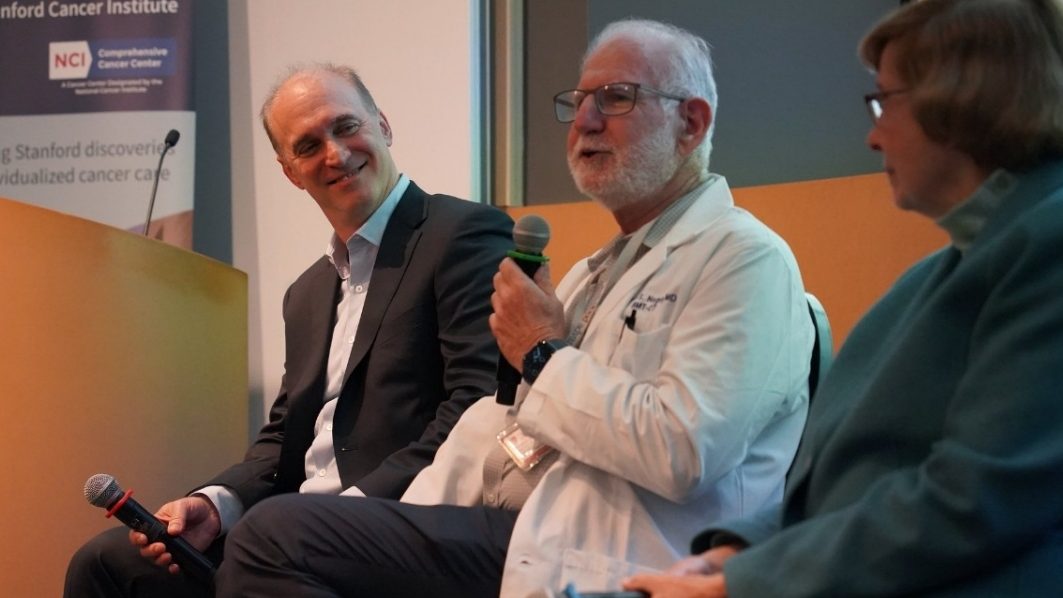When Stanford Cancer Institute (SCI) member Robert Negrin, MD, embarked on his professional career at Stanford as an intern in 1984, the concept of bone marrow transplantation (BMT) as a means to fight cancer was science fiction. He got his start in the Department of Internal Medicine but was unsure of his next steps. As an intern, he loved working with patients. Upon seeing the individual impact he and his colleagues could make on a patient, he said, “I’ve always found that to be incredibly energizing. To be in partnership with my patients and their families and really working towards a common goal inspires me endlessly.”
It wasn’t until Stanford professors Peter Greenberg, MD, former director of the Stanford MDS Center, and Stanley Schrier, MD, a founding member of the Division of Hematology, introduced Negrin to the world of hematology that he found his calling.
“I just really enjoyed what they did, how they thought, the questions they were trying to address, and how they were trying to address those questions. That’s what led me to hematology,” Negrin remembered.
Around this time, Negrin attended his first meeting of the American Society of Hematology (ASH). Negrin remembers attending the meeting in San Francisco, bright-eyed and bushy-tailed, solidifying his area of focus.
“There was so much energy, so many people there, so many great talks. People came together from all over the world. Like a lot of people that say this was their home, that was certainly my experience as well,” he said.
Serendipitously, when it was time for Negrin to start his fellowship, Stanford had founded its own BMT program, spearheaded by Karl Blume, MD. The concept of rewiring the incredibly complex human immune system as a means to fight cancer fascinated Negrin. Soon after completing training, he joined the then coined BMT program, now known as the Blood and Marrow Transplantation and Cellular Therapy (BMT-CT) program, as a faculty member in 1990, where he helmed a research lab uncovering immune mediated mysteries for over 30 years.
“We’ve made some key observations that I think are important, and along the way, I’ve had the opportunity to train many fellows and graduate students, some of whom are in leadership roles around the world today. It’s been a great honor to watch their careers flourish. It’s really been a highlight for me,” Negrin said.
Throughout his tenure at Stanford, Negrin continued his involvement with ASH, serving on several review and editorial committees and eventually becoming the founding editor of their Blood Advances journal.
He also helped expand ASH’s international presence by working with and training doctors and students in Cambodia to tackle hematologic malignancies through free clinics and educational outreach.
“Blood disorders, like any disease, don’t care about boundaries, borders, or background. There is an incredible need, and it’s a real privilege to represent an organization that does great work,” Negrin said.
In 2023, Negrin was elected president of ASH after over 25 years of service to the organization. He’s been a member since 1990, and to him, this new leadership position is a full-circle moment in his career.
“For me personally, it’s an incredible honor and privilege to represent this organization that I’ve been involved with throughout my professional career,” he said.
Negrin recalls teaching an undergraduate course at Stanford called “Cancer and the Immune System,” regaling students with ideas that seemed far out of reach for contemporary science.
“We looked at these things, and it always ended with, ‘Maybe someday we’ll be able to do this,’ and that someday is today. These are heady things that used to be science fiction,” Negrin said. “I have to say we’ve come so far. There’s still much to do, new ideas to explore, unmet needs to rectify. That’s the work we’re going to carry on with ASH.”
March 2024
By Kai Zheng
Image: Sarah Pelta



